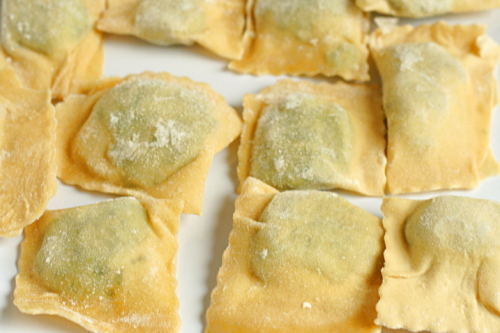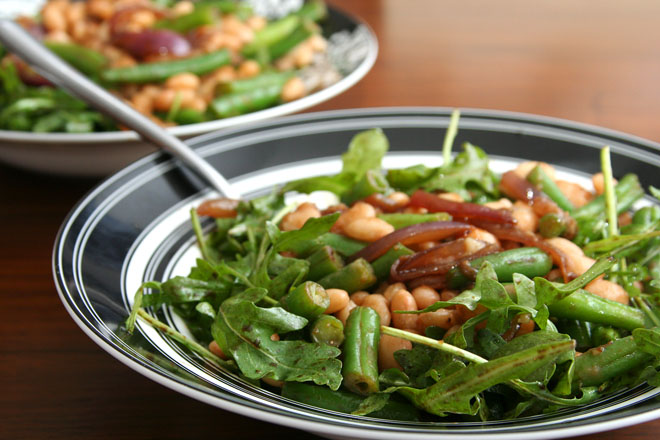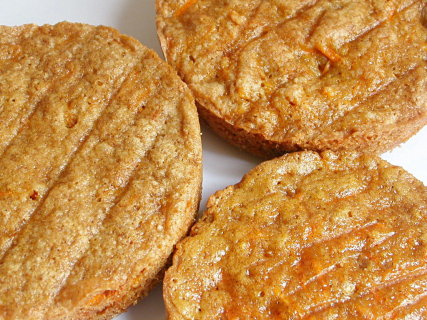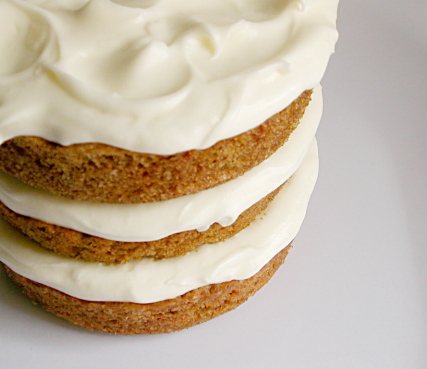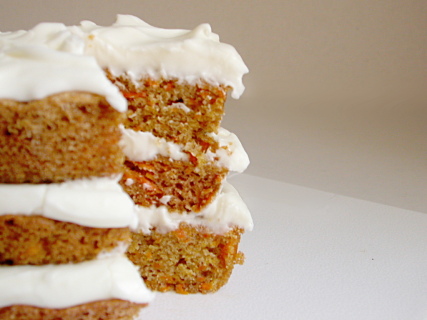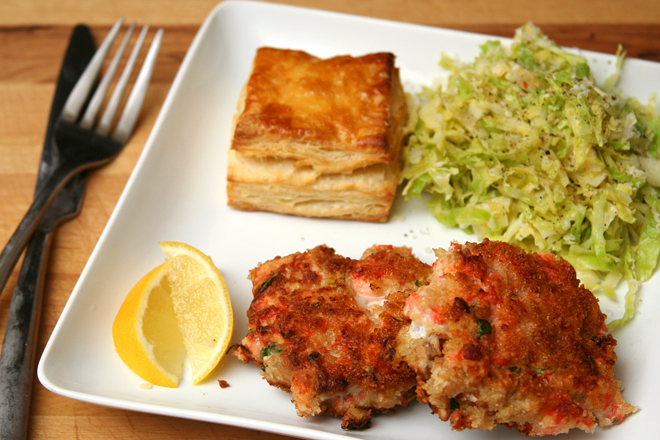This is the weirdest thing I’ve made in a long time. I think I saw the recipe in Bon Appetit and caught that I liked each component – arugula salad, poached eggs, polenta – but didn’t stop to consider that those items might not belong on the same plate.
I’m not really that close-minded. Someone obviously enjoyed this, so there must be something good about it. I just needed to focus on that good.
There were moments of doubt. The coconut milk in the polenta is unusual, not to mention fattening, but then tasted surprisingly good. The original recipe recommends frying the polenta fingers on high in extra virgin olive oil, which is silly. I used a mixture of olive oil (not virgin) and canola oil, and it still smoked on medium-high heat. I did find that the heat must be turned up pretty high to brown the polenta.
I doubled the amount of dressing and greatly increased (quadrupled maybe) the amount of arugula. It was all going fine until I was actually putting the egg on the salad, and then I realized that egg on salad actually might not be my thing.
But, never mind, I guess it is my thing, and maybe Dave’s too. The egg was quite a nice topping for the salad, and the polenta fingers were a great accompaniment, especially when they were used to sop up extra vinaigrette. So if poached egg on salad is your thing, or if you’re willing to try something new, this recipe is worth your effort.
Poached Eggs with Arugula and Polenta Fingers (adapted from Bon Appetit May 2008 )
Makes 4 servings
Bridget note: I’ve made the recipe a bit more detailed than it is in the magazine, as well as changing the polenta and poached egg method to those of Cooks Illustrated.
For the polenta:
1 13.5- to 14-ounce can unsweetened coconut milk
water
½ cup polenta or coarse cornmeal
¼ teaspoon salt
2 tablespoons parmesan cheese
1 tablespoon olive oil
1 tablespoon canola oil
For the salad:
8 cups arugula
2 teaspoons balsamic vinegar
2 tablespoons olive oil
pinch salt
pinch black pepper
For the poached eggs:
4 eggs, each cracked into a small handled cup
2 tablespoons white vinegar
1 teaspoon salt
1. For the polenta: Pour coconut milk into 2-cup measuring cup and add enough water to make 2 cups liquid. Bring liquid to boil in medium heavy-bottomed saucepan over medium-high heat. Reduce the heat to the lowest possible setting, add salt, and pour the cornmeal into the water in a very slow stream from a measuring cup, all the while whisking in a circular motion to prevent lumps.
2. Cover and cook, vigorously stirring the polenta with a wooden spoon for about 10 seconds once every 5 minutes and making sure to scrape clean the bottom and corners of the pot, until the polenta has lost its raw cornmeal taste and becomes soft and smooth, about 30 minutes. Stir in the parmesan and season with salt and pepper to taste.
3. Spray 8-inch square baking pan with nonstick cooking spray. Pour polenta into pan and spread to corners. Press plastic wrap directly on surface of polenta and chill until firm, about 1 hour. (Can be made 1 day ahead and refrigerated.)
4. Turn polenta out onto cutting board. Cut into 4×1-inch rectangles. Heat oils in 12-inch nonstick skillet over medium-high heat. Working in two batches, add polenta fingers; cook until golden, about 3 minutes per side.
5. For the salad: While first batch of polenta cooks, whisk oil, vinegar, salt, and pepper in small bowl until combined. In large bowl, toss arugula with dressing and divide among salad plates.
6. For the poached eggs: While last batch of polenta cooks, fill an 8- to 10-inch nonstick skillet nearly to the rim with water, add the salt and vinegar, and bring the mixture to boil over high heat. Lower the lips of each cup just into water at once; tip eggs into boiling water, cover, and remove from heat. Poach until yolks are medium-firm, exactly 4 minutes. For firmer yolks (or for extra large or jumbo eggs), poach 4 ½ minutes; for looser yolks (or for medium eggs), poach 3 minutes.
7. Top each salad with a poached egg. Break yolks with tip of knife. Sprinkle with black pepper. Serve with polenta.








